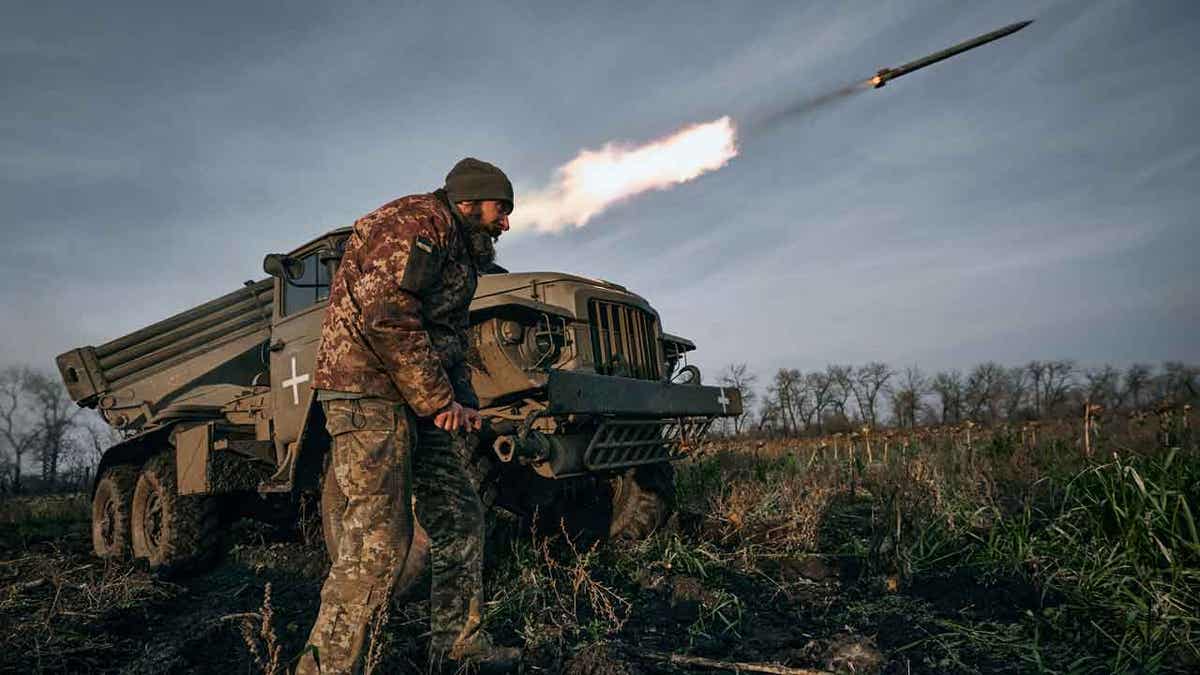Ukraine’s artificial intelligence (AI) development continues at a frightening pace beyond that of even tech giants in the U.S. and China as the war with Russia lurches toward a third year, but experts highlighted America’s critical role in helping that rapid advance.
“What I think we underestimate in the U.S. military is the actual cost of the infrastructure required to do this in combat,” Benjamin Jensen, senior fellow of Future War, Gaming and Strategy at the Center for Strategic and International Studies, told Fox News Digital.
“Ukraine is doing it because they’re building it from the bottom up, and it’s antifragile … it’s small, it’s scalable, it works, and they know what to do it,” Jensen said. “We’re trying to do it very Pentagonese from the top down, which means we’re going to spend tens of billions of dollars for a couple of high-profile failures versus spending, you know, one million dollars on nine failures and one success.”
The U.S. discovered Ukraine’s unbelievable advancement with AI just months into the war. Brett Velicovich, a Fox News contributor embedded in Ukraine in 2023, claimed the advancements Ukrainian technicians had achieved and how they had achieved them were “out of this world,” and the U.S. had no idea about any of it.
AI WILL IMPACT 60% OF US JOBS, INCREASE INEQUALITY WORLDWIDE, IMF WARNS
Velicovich and other experts described the various ways Ukraine had utilized AI, including facial recognition to locate war criminals, systems to help drone guidance and target selection, satellite analysis to gather evidence of war crimes and identification of Russian disinformation and propaganda.
President Biden meets with Ukrainian President Volodymyr Zelenskyy in the Oval Office of the White House, Thursday, Sept. 21, 2023. (AP Photo/Evan Vucci, File)
Jensen, who is also a professor of strategic studies at the Marine Corps University School of Advanced Warfighting, discussed the culmination of those efforts in Ukraine’s Delta situational awareness system, which integrates a range of systems, including visual recognition and geolocation mapping, fed data by open source participation from the Ukrainian people.
Ukraine unveiled the system in late 2022, but it received little press despite proving enormously helpful in processing the huge amount of battlefield data to guide the Ukrainian forces on the battlefield with active targeting and coordination.
WHAT IS ARTIFICIAL INTELLIGENCE (AI)?
Praise for Ukraine’s ingenious efforts notwithstanding, Jensen highlighted the role the United States foreign aid programs have played in helping make these advancements a reality. AI requires data to train the model and platforms, and the United States Agency for International Development programs helped fund the Ukrainian digital identity system.
The data sharing and tech partnerships between the U.S. and Ukraine allowed Kyiv to quickly simplify and enhance the system, speeding up everything from aid and assistance delivery to civilian notifications of incoming attacks and helping to find missing persons.

The Ukrainian military’s Grad multiple rocket launcher fires rockets at Russian positions on the frontline near Bakhmut, Donetsk region, Ukraine, Thursday, Nov. 24, 2022. (AP Photo/LIBKOS, File)
James Hess, professor at the School of Security and Global Studies at the American Public University System, agreed that U.S. data not only helped Ukraine achieve these incredible developments, but it also continues to do so.
“To understand the battlefield environment is time-consuming and its complex, and that’s, of course, why it’s so important because the amount of data is overwhelming,” Hess explained, referring to the American role in the process.
WHERE IS THE AI BOOM? EXPERTS CAUTION NEW TECH WILL TAKE TIME
“Overwhelming data, which can also be a form of bad data, because if you have too much, you can’t really work through that effectively, so that’s one of the impetus behind using AI is to help alleviate the overwhelming data concerns,” Hess continued, noting that few batches of data can be larger than that from a battlefield environment.
“In the case with Ukraine, it’s not just personnel help. It’s also sensor help; it’s also processing help; it’s also the process of targeting process,” Hess added. “All those different forms of help are extremely valuable to Ukraine, and I don’t see that [help] ending anytime soon.”

A view of destroyed armored vehicles and tanks belonging to Russian forces after they withdrew from the city of Lyman in the Donetsk region of Ukraine on Oct. 5, 2022. (Metin Aktas/Anadolu Agency via Getty Images)
Hess revealed that the real question and drive for development in Ukraine increasingly focus on how to more seamlessly communicate the data collected and processed by AI to troops for real-time use to speed up on-field targeting and coordination.
CLICK HERE TO GET THE FOX NEWS APP
“A lot of the research and focus right now – in the United States and China as well – how I can be enabled to go directly from sensor to shooter,” Hess said. “Of course, that brings up other challenges and concerns: Where does that information get verified? Who’s validating it before that shooter is processing it?”
“I don’t think we’re seeing a case where in Ukraine the humans [are] out of the loop by any means,” Hess assured. “It’s still certainly human in the loop, but as AI develops, the process is going to be that the human in the loop … is continuously backing away as the AI becomes more capable and the algorithms more refined, and that’s kind of where it’s going.”